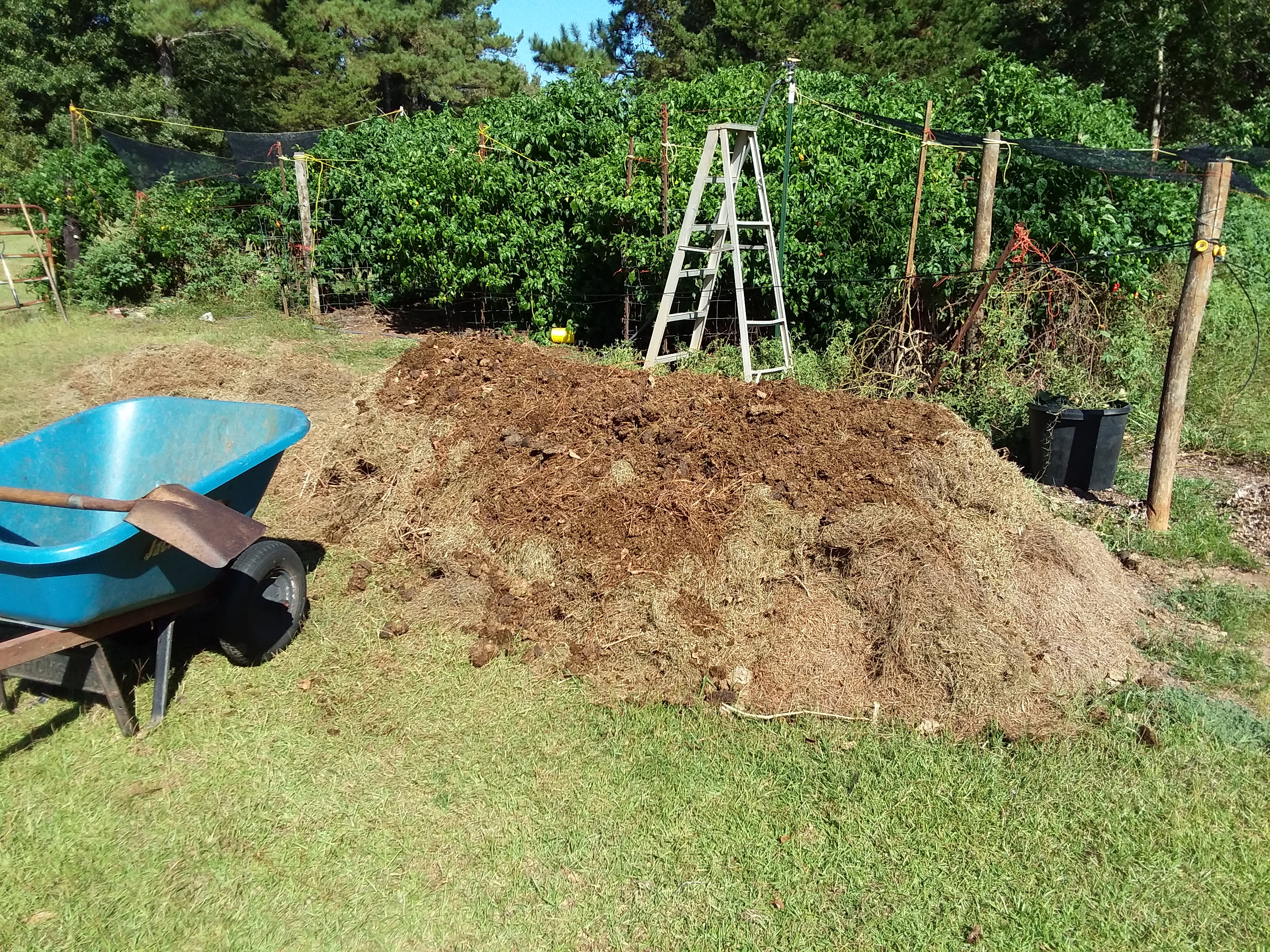I have a large supply of captive BSF larvae that have been going and growing for 2½ months. They live in 15 gallon buckets of compost "tea". They're eating well and have to be multiplying constantly but I'm not exactly sure how that works.
I'm also making dry compost from the organic materials I have readily available to me from around the place. This newest pile is alternating layers of finely chopped grass clippings and horse manure. I started this one in August and it's well seeded with 33-0-0 nitrogen.
After watching how quickly the BSF larvae tear down everything offered to them, I'm wondering about seeding a compost pile such as this with a small bucket of them. Would they thrive and multiply like they do in the "tea" or would they simply die out or move away? Would I have to keep the pile really wet to keep them at home and eating?

I'm also making dry compost from the organic materials I have readily available to me from around the place. This newest pile is alternating layers of finely chopped grass clippings and horse manure. I started this one in August and it's well seeded with 33-0-0 nitrogen.
After watching how quickly the BSF larvae tear down everything offered to them, I'm wondering about seeding a compost pile such as this with a small bucket of them. Would they thrive and multiply like they do in the "tea" or would they simply die out or move away? Would I have to keep the pile really wet to keep them at home and eating?


